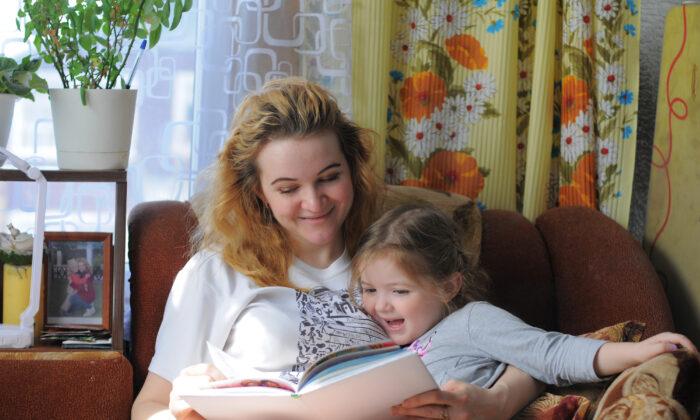Stepping on the path of homeschool is not for the faint of heart. In one fell swoop, you’re swimming against the current while carrying the responsibility of none other than your precious children’s education and future.
No pressure.
The first few steps along this path might be the most challenging. A few days in and you may convince yourself that you’re not cut out for this, that your child will never cooperate with you, and that this whole experiment just isn’t working.
Truth be told, you need much more time than that.
Rocky starts are common and perfection is a myth. The key to starting along this great adventure is to ease in, give yourself and your children grace, slow down, and keep going. It’s not uncommon for it to take a year or more before you feel like you’ve found your groove.
In the meantime, though, there are steps you can take to begin to feel much better about the journey ahead.
Pare Down
I’m going to go out on a limb and guess that you’re trying to do too much. We’ve all done it. You know the kids need math, reading, writing, spelling, and, of course, science, history, art, music, and what about handwriting, typing, handicrafts, instrument lessons, foreign language study, and ... I’m exhausted just typing that.It’s great to have high standards and big dreams. You don’t need to take every single subject your child might possibly study and dump it over their heads in the first week, however. In the beginning, pare the workload down to the very bare minimum.
Your goal in the first few weeks and even months is not to produce robotic workhorses but to connect with your children, establish a rhythm and routine to your days, and revel in the fact that you’ve taken this leap together.
You’d be amazed at how much your children can learn if you simply practice some math and read a variety of books together. Start there. As things start to flow, you’ll know when it’s a good time to add something else.
Replace Your Schedule With a Rhythm
I’m going to go out on another limb and guess you’re overscheduling your day. If you’ve created an hour-by-hour schedule chock full of chores and copious subjects and to-do’s, you’re probably making yourself a little crazy. You’re supposed to begin math lessons at 9 a.m., but your child is still dilly-dallying over her breakfast dishes and you’re falling so far behind schedule!Stop.
An easy way to free yourself of the tyranny of your own schedule is to aim for a daily rhythm instead. Map out a very loose framework for how you’d like your day to flow. For example, perhaps there’s the early morning time for hygiene, morning chores, breakfast, and generally getting ready for the day’s activities.
Next, you have school time. Somewhere in the middle, you break for a nice, relaxing lunch and active time. For young children, that may be it; for older students, perhaps you reconvene for some more schoolwork—perhaps with an emphasis on projects or interest-driven subjects. Perhaps at this time, extra-curricular activities occupy most of your focus.
Finally, you reach the evening, when you tidy up, prepare dinner, and wind down as a family.
This is, of course, just an example. Your rhythm should be the one that works best for your family. The key is to make it much more flexible and to untie it from very specific hours of the day. Simply break your day into blocks—only a few of them. Give it a try and tweak and adjust as needed. The simpler the better. If your tense shoulders relaxed a little bit considering this, you’re on your way to better days.
Slow Down
Another common mistake homeschoolers make is trying to check too many boxes. Checking boxes can make you feel like you’re accomplishing something, but learning is not like a formula you can enter into a spreadsheet and expect to produce consistent outputs over time. It’s an art form that ebbs and flows. It’s messy, unpredictable, and full of wonder.If you’re focused on checking boxes rather than exploring the world through your children’s eyes, you’re missing the point.
So, stop measuring success by the number of checkmarks you make, and perhaps start measuring by, say, the number of hugs you’ve given or the one magical moment of the week when your child regaled you with the details of how a shark catches its prey after she read it in a book.
Trade In Your Teacher’s Hat for a Student’s Hat
You may be trying to imitate the role of a school teacher in your homeschool. But you’re a parent, first and foremost. So that means that you love, cherish, and understand your child beyond what any teacher ever could. Second, you’re a fellow student.A homeschool parent need not pretend to be the authority on every subject being taught. It’s far more authentic and wonderful to delve into the subject alongside your children with wonder and curiosity. Shoulder to shoulder, you can work through that math problem or essay, or follow that forest trail, searching for the items on your scavenger hunt.
Sure, sometimes you’ll need to bring in expertise. Mostly, though, you’ll find that you’re learning right alongside your children, probably for the first time, if you’re a product of the public school system; and you’ll see the magic of true learning unfold.
While you’re learning, be sure to include good books about education and homeschooling in your reading stack as you go. There’s an infinite amount of knowledge, insight, and inspiration to be had from those who’ve come before you. Soak it all in and gradually apply that which speaks to your good senses.
Take Care of You
Your mood, your happiness, your energy levels, and your perspective will have a huge impact on your homeschool environment. Make sure you take care of yourself.Exercise, good nutrition, regular breaks, and time spent doing what you love as an individual are crucial for the long-term success of your homeschool. If a messy space bothers you, ensure you have time to tidy up. If time alone renews you, make sure it’s a part of your everyday life. Do whatever you need to do to ensure you can show up with your full potential and do your very best.
If you feel like you’ve gotten off to a rocky start in your homeschool and are considering throwing in the towel, I encourage you to give it a little longer. Try some of these tips and see if you can devise a new lifestyle that will make this rewarding experience work for your family.






